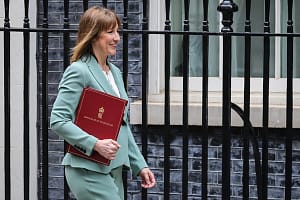This is one of the most positive reports from the Bank of England so far in 2025, suggesting consumer confidence is returning.
A number of indicators are positive, including both net mortgage approvals and net borrowing of consumer credit rising.
However, there are still signs of caution, with the amounts being deposited in banks and building societies reaching £7.8bn, up from £4.3bn in May.
Cash ISA inflows maintain their momentum
ISA deposits to banks and building societies reached £3.6bn. While a slight fall from May’s £3.9bn, it was a higher amount year-on-year as last year’s total was £3.4bn.
The popularity of ISAs then shows no signs of receding. It appears that the mooted reforms to the Cash ISA may have inadvertently led people to take advantage of the current allowance while it’s there, boosting cash savings when the Chancellor is looking to encourage greater investment instead.
Now the Chancellor has confirmed that the reforms have been put on hold, it will be interesting to see whether the inflows to ISA products continue to be greater than the previous year.
With variable Cash ISA interest rates typically higher than those offered in variable traditional cash savings accounts, inflows are likely to remain robust.
Mortgage approvals back on the rise
Today’s figures saw an increase in net mortgage approvals, putting the housing market back on the front foot after the stamp duty changes.
The number of mortgages approved by British banks rose to 64,200 in June. That was up from 63,300 in May, and 60,900 in April.
Accordingly, net borrowing of mortgage debt by individuals increased by £3.1 billion to £5.3 billion in June, compared to a £2.8 billion increase of net borrowing to £2.2 billion in May.
This underlines the resilience of the housing market. The combination of the base rate having fallen this year with more cuts expected and wages continuing to outpace inflation are making conditions more favourable for potential homebuyers. In fact, the‘effective’ interest rate on newly drawn mortgages decreased for the fourth consecutive month, to 4.34% in June from 4.47% in May.
Credit demand increases
Net borrowing of consumer credit by individuals increased in June to £1.4 billion, having been £0.9 billion in May. This was largely driven by an increase in net borrowing through credit cards. These figures suggest a brighter outlook for the economy given this rising confidence among UK consumers to spend.
This was perhaps driven by real earnings rising at a healthy pace combined with the UK being largely shielded from US tariff uncertainty. Overall, the annual growth rate for all consumer credit increased to 6.7% in June from 6.5% in May.






Leave a Comment